Block A is given an acceleration 12ms−2 towards left as shown in fig. Assuming block B always remains horizontal, find the acceleration (in ms−2) of B.
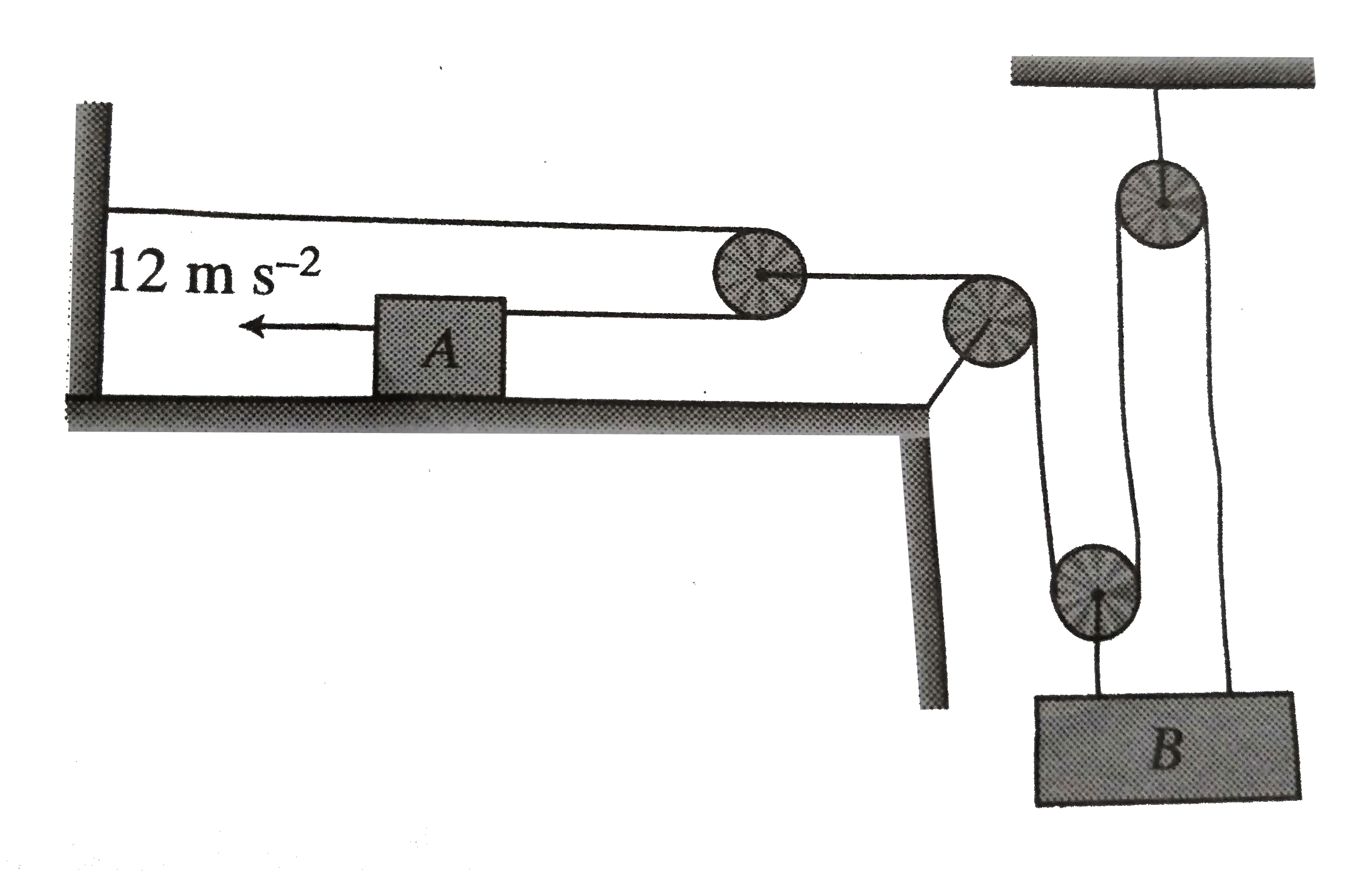
Sum of change in length of segment of string (1)
Should be zero⇒(−2xA)+(2xP1)=0
or xA=xP1⇒aA=aP1 ..(i)
Also sum of the change in segment length should also be sow
(−xp1+xB)+(xB)=0
2xB−xp1=0⇒2aB=ap1
From (1) and (2) aA=2aB
⇒aB=aA2=1ms−2.

Topper's Solved these Questions
- BOOK - CENGAGE PHYSICS ENGLISHCHAPTER - NEWTON'S LAWS OF MOTION 1EXERCISE - Exercise 6.413videos
NEWTON'S LAWS OF MOTION 1
- BOOK - CENGAGE PHYSICS ENGLISHCHAPTER - NEWTON'S LAWS OF MOTION 1EXERCISE - Subjective15videos
NEWTON'S LAWS OF MOTION 1
- BOOK - CENGAGE PHYSICS ENGLISHCHAPTER - NEWTON'S LAWS OF MOTION 1EXERCISE - Exercise 6.235videos
NEWTON'S LAWS OF MOTION 1
- BOOK - CENGAGE PHYSICS ENGLISHCHAPTER - MISCELLANEOUS VOLUME 2EXERCISE - INTEGER_TYPE10videos
MISCELLANEOUS VOLUME 2
- BOOK - CENGAGE PHYSICS ENGLISHCHAPTER - NEWTON'S LAWS OF MOTION 2EXERCISE - Integer type1videos
NEWTON'S LAWS OF MOTION 2
Similar Questions
The system shown in fig. is given an acceleration a towards left. Assuming all the surfaces to be frictionless, find the normal reactions applied by wedge on the sphere.
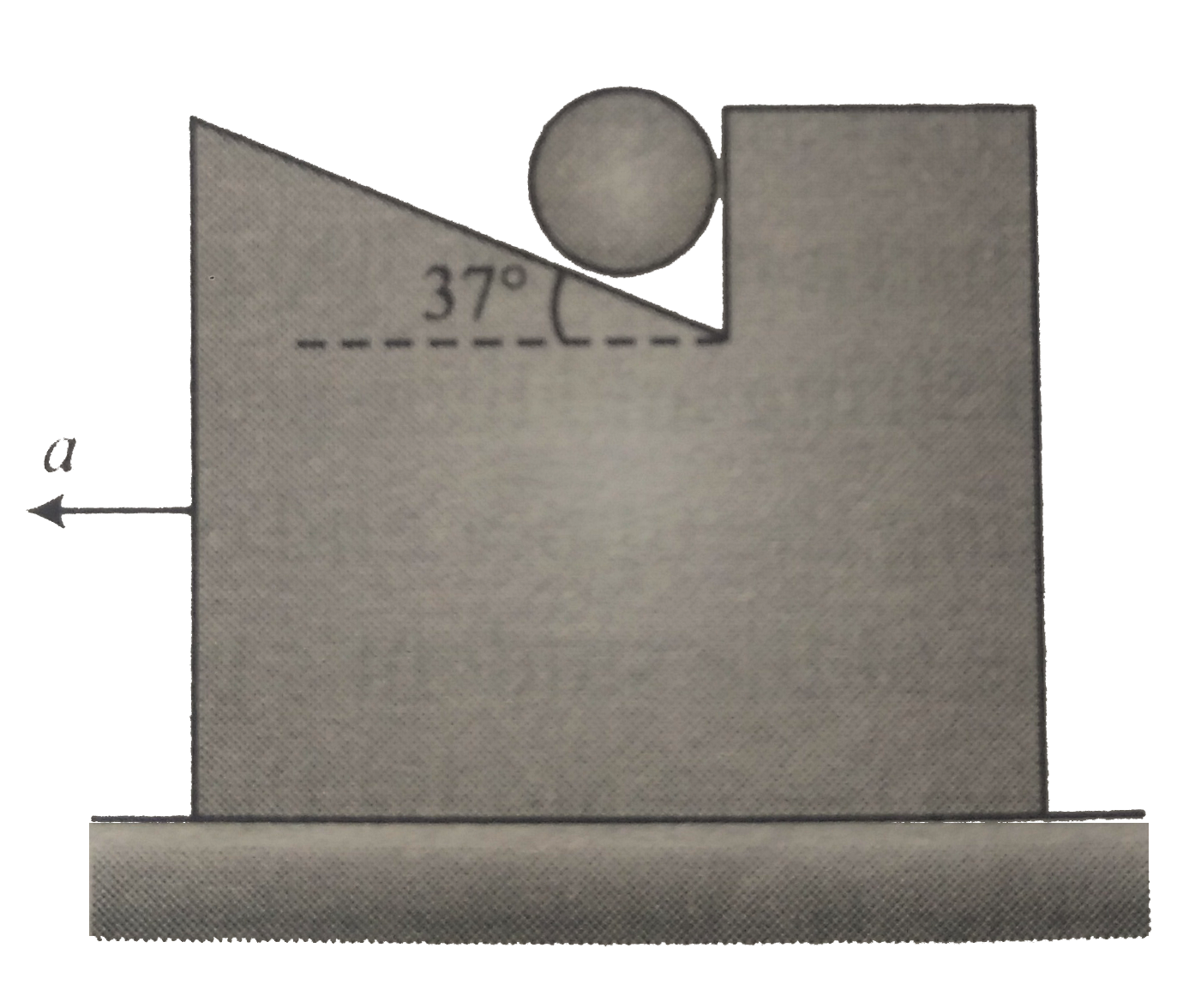 View Solution
View SolutionIn the arrangement shown in fig., if the acceleration of B is →a. Then find the acceleration of A.
 View Solution
View SolutionThe masses of the blocks A,B and C shown in fig (a) are 4kg,2kg and 2kg respectively Block A moves with an acceleration of 2.5ms−2
a. Block C is removed from its in position and placed on block A fig (b). What is now the acceleration of block C ?
b. The position of the block A and B subsequently interchanged find the new acceleration of C .
The coefficient of friction is the same for all the conect surface. View Solution
View SolutionIf block A is moving with an acceleration of 5ms−2, the acceleration of B w.r.t. ground is
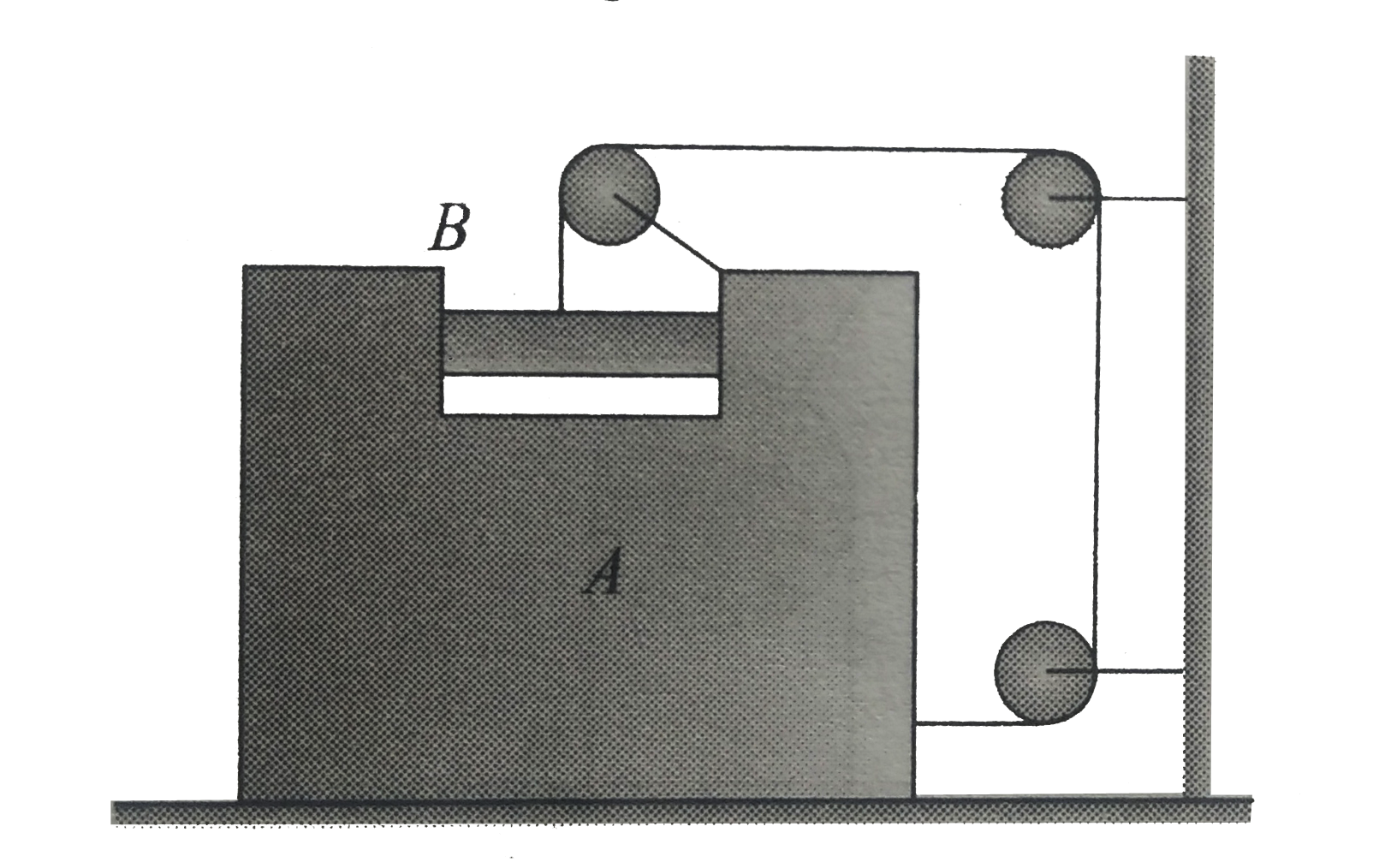 View Solution
View SolutionIf block B moves towards right with acceleration b, find the net acceleration of block A.
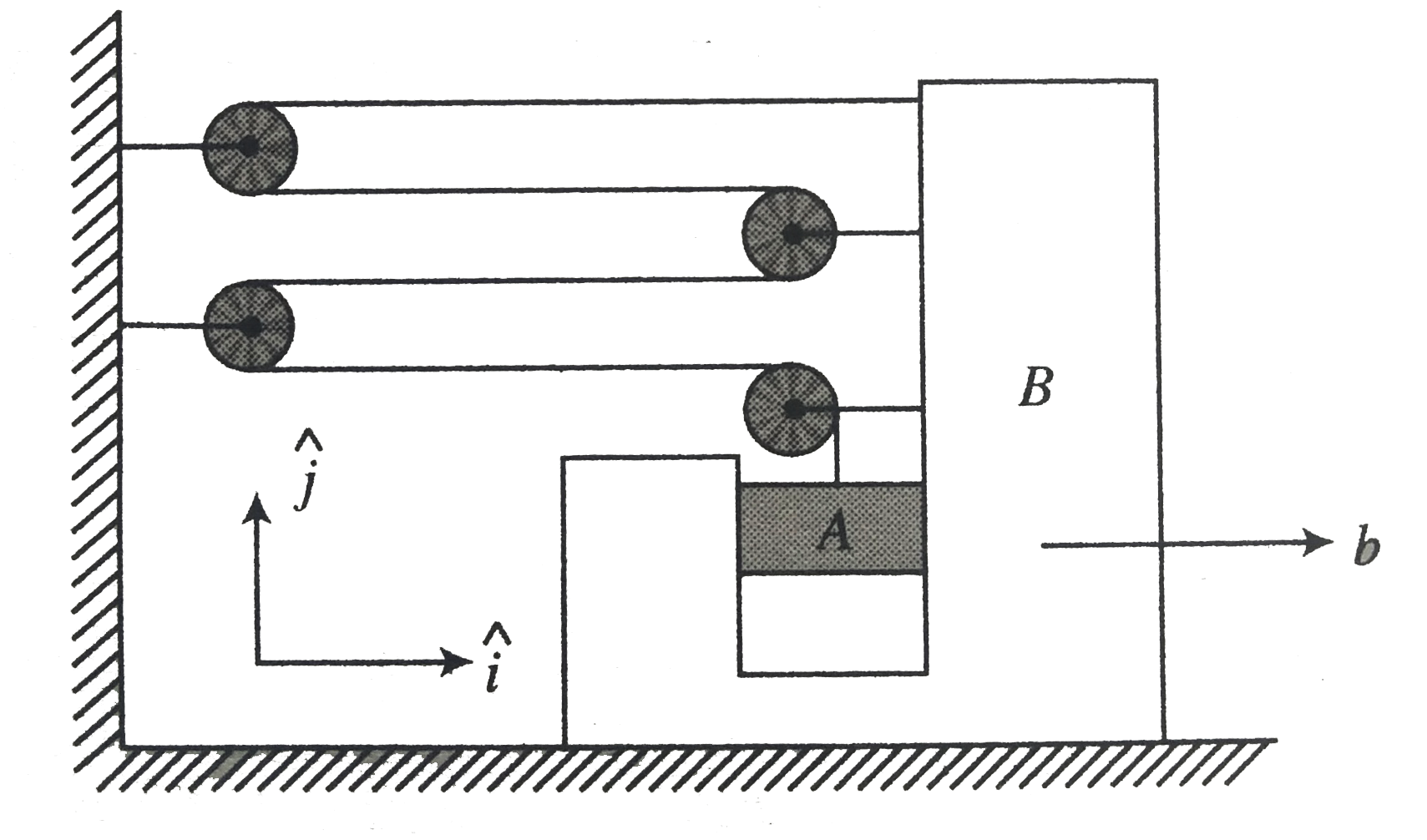 View Solution
View SolutionConsider the system shown in figure
Mass of block A= 3m ,
Mass of block B= 2m .
Find the acceleration of A and B.
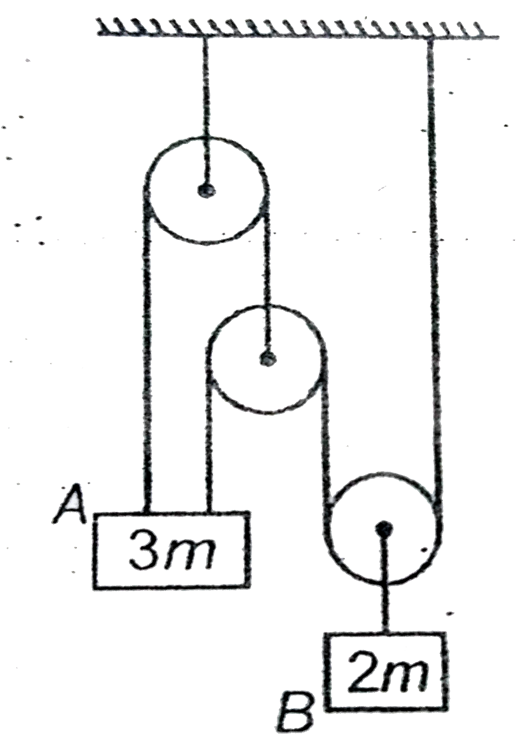 View Solution
View SolutionTwo particles of masses 2 kg and 4 kg are approaching each other with acceleration 1ms−2 and 2ms−2, respectively, on a smooth horizontal surface. Find the acceleration of center of mass of the system.
View SolutionFind the acceleration of block B as shown in fig. (a) and (b) relative to block A and relative to ground if block A is moving toward right with acceleration a.
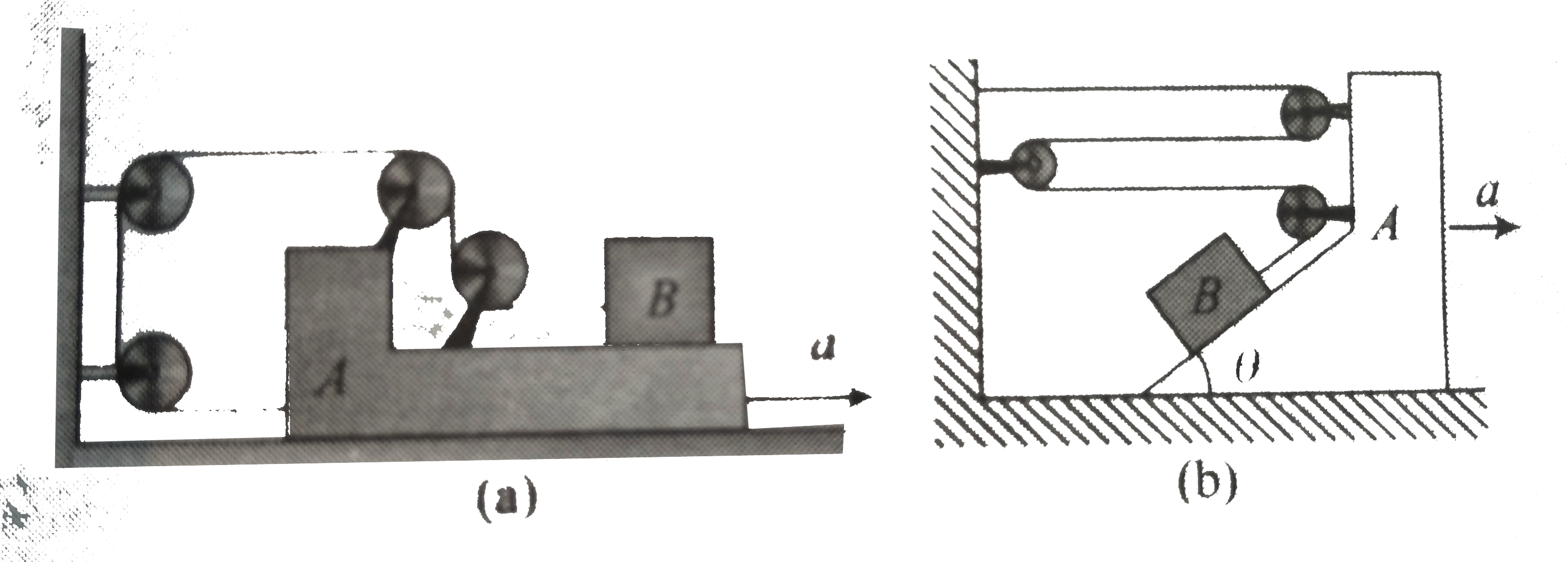 View Solution
View SolutionA 20kg blocks is placed on of 50kgblock as shown in figure An horizontal force F acting on A causes an acceleration of 3ms−2 to A and 2ms−2 to B as shown in the figure for this situation mark out the corect statement(s)
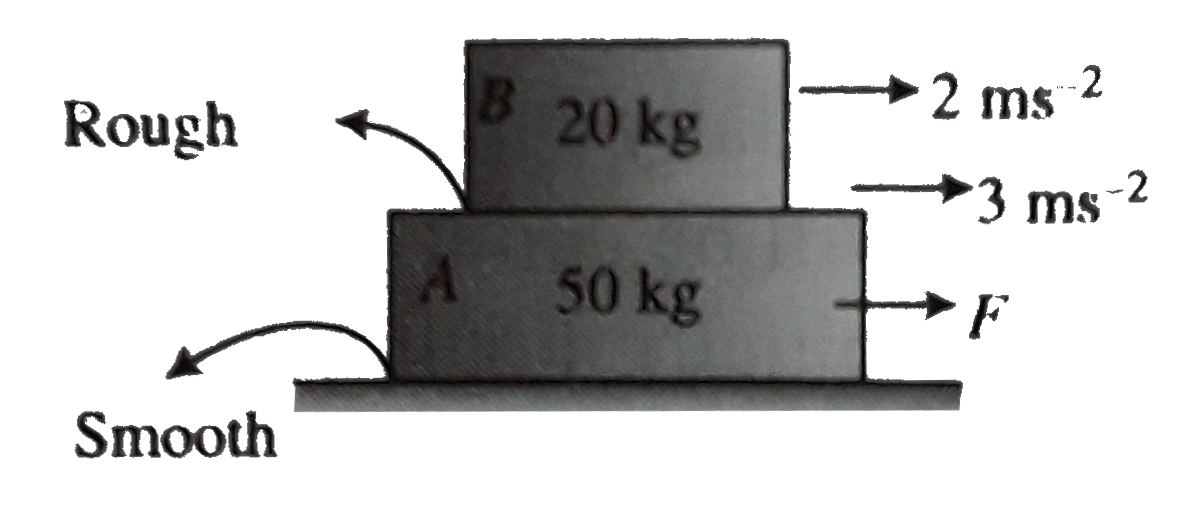 View Solution
View SolutionA block A and wedge B connected through a string as shown. The wedge B is moving away from the wall with acceleration 2m/s2 horizontally and acceleration of block A is vertical upwards. Then
 View Solution
View Solution

